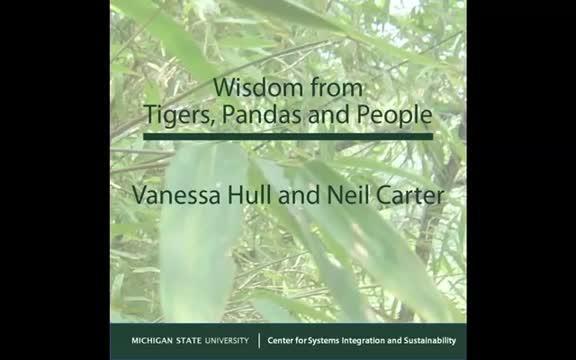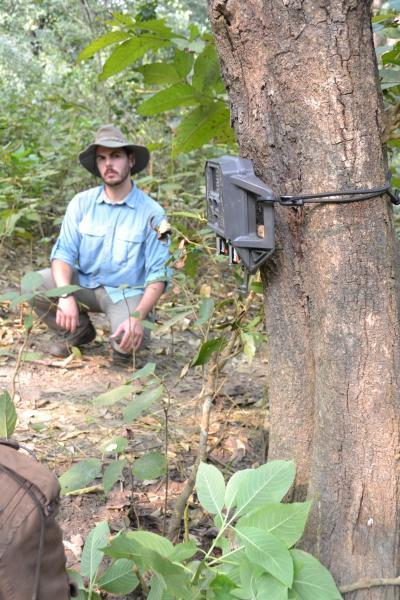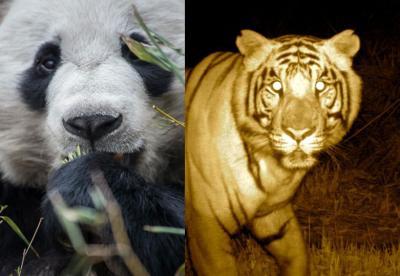"For people interested in wildlife research and conservation, there's an increasing awareness of the need to go beyond biology and ecology to incorporate insights from various other disciplines, like social psychology and economics. We know it's important, and now we're saying "here's a good way to do it,'" Carter said. "The idea is that you have to be proactive and understand the dynamics in your system of interest, which also means understanding other systems."
Both of these biodiversity hotspots have deep and complex links with the humans that also depend on rich but finite natural resources. Wolong is home to approximately 5,000 human residents, and conservation policies represent a constant struggle to balance the residents' need to eke out a living with the pandas' full reliance on a specific lifestyle that centers on vast access to bamboo.
Nepal's national park has no residents, but the people living on its borders do venture inside to use its resources. In Chitwan, the borders are porous both ways. Tigers can venture out to attack livestock, and also can pose a threat to the people who walk through the woods.
At the framework's core is an understanding of how conservation efforts not only directly affect wildlife but also affect people, because that in turn can have a significant effect on the wildlife. On the surface, pandas and tigers seem to have different impacts. Pandas eat bamboo. Tigers sometimes eat livestock… and even people, though rarely. Both of these animals bring advantages too, which range from the tangible, such as attracting tourists, to more esoteric benefits such as spirituality and national pride.
But the authors note that issues of telecoupling processes such as tourism and migration can loom large in many flagship nature reserves, as do issues of how policy is executed, and how the people living in and around the reserves behave. Giving scientists a framework to compare similar dynamics makes for more meaningful information for those developing and applying wildlife conservation policy.

Neil Carter and Vanessa Hull talk about what they've learned from the animals -- and people -- they study.
(Photo Credit: Sue Nichols, Center for Systems Integration and Sustainability, Michigan State University)
"Much of things one learns on one site trickles to other sites," Carter said. "For instance, we've seen that how much responsibility local people have to monitor and manage a forest track is significant. Nepal took the lead in experimenting with ways to have people manage their forest. Now that's being tried in other places.
"You won't get one answer. You get different points of view – and that's important."

Neil Carter checks the alignment of a capture camera.
(Photo Credit: Sue Nichols, Michigan State University)

Pandas and tigers are very different, and they don't bump into each other, yet the similarities of their interactions with people, and how people affect them, offer important insights for conservation.
(Photo Credit: Panda: Kurt Stepnitz, Michigan State University; tiger: Neil Carter, MSU)
Source: Michigan State University